#margaret morris movement
Photo

Henry David Thoreau
Henry David Thoreau (1817-1862) was an American philosopher, writer, naturalist, and political activist. He is best known for his book Walden, published in 1854, which recounts his two-year experiment living alone in a small cottage at Walden Pond two miles outside Concord, Massachusetts, and his essay On the Duty of Civil Disobedience written in 1849 shortly after his release from a Concord jail for non-payment of a poll tax.
Early Life & Transcendentalism
Thoreau was born in Concord, Massachusetts, on 12 July 1817. He studied at Harvard College and his worldview was shaped by transcendentalism, a belief in the divinity of human nature, which was not a coherent philosophy but an attitude or state of mind that inspired many American intellectuals who flourished between 1820 and 1860. The movement's foremost representative, Ralph Waldo Emerson (1803-1882) had given the Phi Beta Kappa commencement address at Harvard with Thoreau in attendance. Other notable transcendentalists were Margaret Fuller, Louisa May Alcott, Walt Whitman, and Bronson Alcott. They were young Americans who had been born into the Unitarianism of New England. According to Perry Miller in his American Transcendentalists, they responded to the new literature of England and the continent "revolting" against the rationalism of Harvard College. Although Protestant, they turned against the Protestant ethic, choosing instead to cultivate the arts of leisure to avoid making money. To some, it was intense individualism, but to others, it was sympathy for the poor and oppressed. Morris wrote: "…the self-reliance and self-determination exalted by the transcendentalists gave to American writers a freedom that vitalized the first period of national letters." (600)
Thoreau graduated in 1837 without distinction and returned to Concord; he viewed Concord as a microcosm of the world. Instead of seeking employment like his fellow graduates, he chose instead to become an observer and interpreter, a "thinker of thoughts, a student of nature and of literature – half-scientist and half-poet" (Mead, 112) He tried teaching for a while and even land surveying. In Walden he wrote, "I did not teach for the good of my fellow man but simply for a livelihood, this was a failure" (65). He even worked for a time in his family's pencil factory. An occasional odd job provided him with enough money to be clothed and fed. He became friends with Emerson, who took him into his home (1841-43) and offered him advice on the craft of poetry and writing. Thoreau moved briefly to New York, living with Emerson's brother, to try to sell some of his essays and poems, but he was unsuccessful.
Continue reading...
38 notes
·
View notes
Note
Hi again! Yeah, from your bookshelf! You seem well informed and I wanna know the type of stuff you read and might recommend. I don't even know what to tell you for my interests because I feel like I'm just begining. Sorry I'm young and dumb still haha.
#1 you're not dumb and #2 nothing to apologize for :)
Here's some books I've got on my shelves or that I've read:
Men Who Hate Women: From Incels to Pickup Artists, Laura Bates
Pro: Reclaiming Abortion Rights, Katha Pollitt
Women, Race, & Class, Angela Davis
American Girls, Nancy Jo Sales
Lesbian Culture: An Anthology, eds. Julia Penelope and Susan J Wolf
Lesbian Studies, Margaret Cavendish
Hood Feminism, Mikki Kendall
Against White Feminism, Rafia Zakaria
Sister and Brother: Lesbians and Gay Men Write About Their Lives Together, eds Joan Nestle and John Preston
Another Mother Tongue, Judy Grahn
Aimee & Jaguar, Erica Fischer
Mouths of Rain: An Anthology of Black Lesbian Thought, ed. Briona Simone Jones
Same-Sex Unions in Premodern Europe, John Boswell
The Mary Daly Reader, eds. Jennifer Rycenga and Linda Barufaldi
Hidden from History: Reclaiming the Gay and Lesbian Past, eds. Martin Duberman, Martha Vicinus, George Chauncey Jr.
Testosterone Rex: Myths of Sex, Science, and Society, Cordelia Fine
Speaking Freely: Unlearning the Lies of the Father's Tongue, Julia Penelope
The Resisting Reader, Judith Fetterley
The Double X Economy, Linda Scott
Not That Bad: Dispatches from Rape Culture, ed. Roxane Gay
Home Grown: How Domestic Violence Turns Men Into Terrorists, Joan Smith
Intercourse, Andrea Dworkin
The Trials of Nina McCall: Sex, Surveillance, and the Decades-Long Government Plan to Imprison "Promiscuous" Women, Scott Stern
The Politics of Reality: Essays in Feminist Theory, Marilyn Frye
Only Words, Catharine A. Mackinnon
Everything Below the Waist: Why Health Care Needs a Feminist Revolution, Jennifer Block
Witchcraze: A New History of the European Witch Hunts, Anne Llwellyn Barstow
Cinderella Ate My Daughter: Dispatches from the Frontlines of the New Girlie-Girl Culture, Peggy Orenstein
Invisible Women: Data Bias in a World Designed for Men, Caroline Criado-Perez
Lesbian Ethics: Toward New Values, Sarah Lucia Hoagland
We Were Feminists Once: From Riot Grrrl to CoverGirl, the Buying and Selling of a Political Movement, Andi Zeisler
Of Woman Born: Motherhood as Experience and Institution, Adrienne Rich
On Lies, Secrets, and Silence: Selected Prose, Adrienne Rich
Feminism, Animals, and Science: The Naming of the Shrew, Lynda Birke
The Female Body in Western Culture: Contemporary Perspectives, ed. Susan Rubin Suleiman
Borderlands/La Frontera: The New Mestiza, Gloria Anzaldua
Flesh Wounds: The Culture of Cosmetic Surgery, Virginia L Blum
Black Feminist Thought: Knowledge, Consciousness, and the Politics of Empowerment, Patricia Hill Collins
Pornland: How Porn has Hijacked our Sexuality, Gail Dines
Backlash: The Undeclared War Against American Women, Susan Faludi
From Eve to Dawn: A History of Women in the World, Marilyn French
This Bridge Called My Back: Writings by Radical Women of Color, eds. Cherrie Moraga and Gloria Anzaldua
Seeing Like a Feminist, Nivedita Menon
With Her Machete In Her Hand: Reading Chicana Lesbians, Catriona Reuda Esquibel
The Disappearing L: Erasure of Lesbian Spaces and Culture, Bonnie J. Morris
Foundlings: Lesbian and Gay Historical Emotion before Stonewall, Christopher Nealon
The Persistent Desire: A Butch/Femme Reader, ed. Joan Nestle
The Straight Mind and Other Essays, Monique Wittig
The Trouble Between us: An Uneasy History of White and Black Women in the Feminist Movement, Winifred Breines
Right-Wing Women, Andrea Dworkin
Woman Hating, Andrea Dworkin
Why I Am Not A Feminist, Jessica Crispin
Sapphistries: A Global History of Love Between Women, Leila J Rupp
I tried to avoid too many left turns into my specific interests although if you passionately want to know any of those, I can make you some more lists LOL
I would suggest picking a book that sounds interesting and using the footnotes and bibliography to find more to read. I've done that a lot :) a lot of my books have more sticky tabs or w/e in the bibliography than in the text so I don't lose stuff I'm interested in.
Hope this helps!
36 notes
·
View notes
Text

La Mort Parfumee/The Perfumed Death (1921)
by Margaret MacDonald Mackintosh
𓆸 watercolour
𓆸 one of Margaret MacDonald Mackintosh's last works
𓆸 influenced by Egyptian art and burial rituals
𓆸 characterised by abstraction of composition
𓆸 characterised by mannerist representation of the human form
𓆸 harmoniously combines sinuous and straight lines
𓆸 large dark areas are balanced by greys and pastel shades, giving the painting a delicate yet bold appearance
𓆸 the painting has a dreamlike quality to it; death is not depicted as completely terrifying, but rather akin to a slow descent into sleep or as a resignation, somewhat alluring, though not devoid of gloom

❉ Margaret MacDonald Mackintosh was a leading exponent of the "Glasgow style", the Scottish manifestation of Art Nouveau¹
❉ She worked in collaboration with Frances MacDonald McNair (her sister), Charles Rennie Mankintosh (her husband) and James Herbert McNair (her brother-in-law). They were known as "The Four".
❉ Part of the "Glasgow Girls"²
❉ Her mediums of choice were watercolours, beaten metal, textiles and gesso³
❉ Her work is stylised and decorative
❉ She did not use sketchbooks very often, which probably means that her art is made from imagination rather than from direct observation
❉ Some of her influences are folklore, poetry, the Bible, symbolism, Celtic myths and the work of Aubrey Beardsley
❉ Though overshadowed by her husband, her art is no less innovative and remarkable
¹Art Nouveau is a period of Art History between 1890 and 1914 which tried to bridge the gap between the fine arts and the decorative arts. It was influenced by William Morris's Arts and Crafts Movement and is connected to the scientific advancements of the era and to the bourgeois desire for modernisation.
²The "Glasgow Girls" were a group of young women artists and designers active during late XIXth and early XXth centuries. Though they pursued diferrent styles, these women were connected by their shared experiences and by the support they gave one another.
³Gesso = Gesso, pronounced 'jesso', was traditionally used to prepare or prime a surface so Oil paint would adhere to it. Gesso is the same as a primer, as in 'pre-primed canvas'. It is made from a combination of paint pigment, chalk and binder.
Sources
https://www.mackintosh-architecture.gla.ac.uk/catalogue/name/?nid=MMM
https://www.willowtearoomstrust.org/margaret-macdonald-mackintosh-life
http://museu.ms/collection/object/151316/la-mort-parfumee-1921?pUnitId=6677
https://www.nationalgalleries.org/art-and-artists/glossary-terms/glasgow-girls
https://willkempartschool.com/how-to-prime-a-canvas-with-gesso-for-an-acrylic-painting/
Dark/Masculine—Light/Feminine: How Charles Rennie Mackintosh and Margaret MacDonald Changed Glasgow School of Art, María Teresa González Mínguez
Image source - Wikipedia
4 notes
·
View notes
Text
wordsz
interesting
interests-------------------------
interview
investigate
investigated
investigation-------------------
involve--------------------------
injury--------------
jewellery
jewelry-----------------------
journal-----------------------
judge-------------------
laboratories
laboratory--------------------
large-----------------------
largely
leadership
legal
legally
legend
legendary
legends
legislation
legislative
legislature
legitimate
liabilities---------------------
liability
liable
lib
liberal
liberia
liberty
magnificent
magnitude
mai
maiden
mail
mailed
mailing
mailman
mails
maintenance
major
majority-------------------
managed
management---------------------
manager
margaret
margin
markers
market---------------------
married-----------------------
massive
master---------------
measured
measurement-----------------
measurements
meetup
memories
memory-----------------
milwaukee
minority
model-------------------
modeling
modelling
models
modem
modems
moderate
moderator
moderators
modern-------------------
moment
moments
mood
moon
morning----------------------
morocco
morris
morrison
mortality
mortgage
mostly
motel----------------------
motels
mother
motherboard
mothers----------------------
motion
motivated
move
moved----------------------
movement
movements----------------------
munich
municipal
municipality
murder
musician----------------------
bonds----------------------
musicians
muslim
narrative----------------------
narrow
nervous----------------------
never----------------------
northern----------------------
northwest
nothing----------------------
notice
novel----------------------
object
objective----------------------
observe
observed----------------------
observer
obtain
obtained
obtaining
obvious
obviously----------------------
oc
occasion
occur----------------------
occurred
occurrence
occurring
opinion----------------------
opinions
opponent
opponents----------------------
opportunities
opportunity----------------------
opposed
opposite
order----------------------
oriented
origin----------------------
original----------------------
originally
parent----------------------
paths
permalink
permanent
permission
permissions
permit
permits
permitted
perry
persian
persistent
person
personal
personality----------------------
personalized
personally
personals
personnel
pharmacology
pharmacy----------------------
photograph
photographer----------------------
photographers
photographic
photographs
photography
photos
photoshop
php
phpbb
phrase
phrases
phys
physical
physically
physician
physicians
physics
physiology
pi
piano
pic
pichunter
pick
picked
picking
picks
pickup
picnic
pics
picture
pictures
pie
piece
pieces
pierce
pierre
pig
pike
pill
pillow
pills
pilot
pin
pine
ping
pink
pins
pioneer
pipe
pipeline
pipes
pirates
plastics
plate
plates
platform
platforms
platinum
play
playback
playboy
played
player
players
playing
playlist
plays
playstation
plaza
plc
pleasant
please
pleased
pleasure
pledge
plenty
plot
plots
plug
plugin
plugins
plumbing
plus
plymouth
pm
pmc
pmid
pn
po
pocket
pockets
pod
podcast
podcasts
poem
poems
poet
poetry
point
pointed
popularity----------------------
population
populations
por
portraits
ports
portsmouth
portugal
portuguese
pos
pose
possibly
post
postage
postal
postcard----------------------
postcards
poverty
powder
powell
power
powered
powerful
powerpoint
powers
powerseller
pp
ppc
ppm
pr
preferences----------------------
preferred
prefers
prefix
pregnancy
pregnant
preliminary----------------------
preserve
president----------------------
presidential
press
prevent
preventing
prevention----------------------
preview
previews
previous
priorities
priority
prison
prisoner
prisoners
privacy----------------------
private----------------------
privilege----------------------
privileges
prix
prize
prizes
pro
probability----------------------
probably
probe
problem
problems
producing
product----------------------
production
productions
productive
productivity----------------------
products
prof
profession
profits
program----------------------
programme
programmer
prohibited
project----------------------
protect----------------------
protected
proven----------------------
promote----------------------
promoted
proven----------------------
provide
provided
purse----------------------
purchase
purchased
pursue----------------------
quarter----------------------
quarters----------------------
question----------------------
quote----------------------
quoted
ranking----------------------
record----------------------
raised
reach
reason----------------------
realistic
recording
recordings
records
properties----------------------
protect----------------------
provided----------------------
purchase----------------------
pursue----------------------
quarters----------------------
question----------------------
quoted----------------------
ranking----------------------
realistically----------------------
recover----------------------
recovery----------------------
record----------------------
reference----------------------
referred----------------------
refers----------------------
reflect----------------------
reflection----------------------
reform----------------------
regulation----------------------
reliability----------------------
rely----------------------
remove----------------------
removed----------------------
removing----------------------
renewable----------------------
rented----------------------
repair----------------------
reporter----------------------
reports----------------------
representative----------------------
reproduction----------------------
request----------------------
requested----------------------
requirements----------------------
reservation----------------------
resolve----------------------
responsible----------------------
responsibility----------------------
restrictions----------------------
restructuring----------------------
results----------------------
retirement----------------------
revealed----------------------
review----------------------
reviewed----------------------
revision----------------------
rewards----------------------
revolutionary----------------------
protect----------------------
proven----------------------
purse----------------------
quarters----------------------
question----------------------
quote----------------------
ranking----------------------
record----------------------
recover----------------------
0 notes
Text
ㅤ
ㅤ 𝐅𝐫𝐞𝐝 𝐃𝐚𝐧𝐢𝐞𝐥𝐬 – 𝐌𝐚𝐫𝐠𝐚𝐫𝐞𝐭 𝐌𝐨𝐫𝐫𝐢𝐬 𝐯𝐞𝐫𝐬 𝟏𝟗𝟐𝟎.
ㅤ “Painting mural is an absolute daubing, forthright appreciation of reality that is all poured through the brushes upon a white holy canvas. Every blot of ink imprints, orginating a meaningful work that holds tons of grizzled histories.”
ㅤㅤ
Intro—Along in few of years, she dropped the ability on a scaffold. Adjusted amity with music beat and dance that led her into the circle of toe dancing. During the hundred years of her life, she dedicated her whole soul to transformed into an ancient dancer who created new revolutions and innovations for future developments. Creating fantasy in the middle of the forest with her limp and beautiful movements, she sprinkled everything with the ravishing eximity size to fabricated unforgettable memoirs. She founded the Margaret Morris Movement, Celtic Ballet, and two Scottish National Ballets in Glasgow and in Pitlochry. Morris devised a system of movement notation, which was firstly published during the year of nineteen-twenty-eight.
Outro—The 1920s living creatures named 'tis lass as a Queen of Ballet. We could merge with an element once we were destined. Was born through a cross between two higher-ups in the arts, she grew up to be a dexterous Milady. Her meretricious prettiness solely portrayed for the sake of the masquerade performance. Even the Third Eye Centre recognized her work in both dance and art with the exhibition catalog Margaret Morris: Drawings and Designs and the Glasgow Years. Work of art makes everything feel eternal, the loyalty that he holds within himself as long as his pulse beats also becomes an inspiration for humans in the future. She, the Margaret, is now immortalized in the Margaret Morris of 1920, sense of adroitness.
ㅤㅤㅤㅤ
0 notes
Text



British dancer/choreographer, Margaret Morris (1891-1980).
#dance#dancing#movement#margaret morris#choreography#french riviera#1920s#20s#posing#poses#vintage#images
840 notes
·
View notes
Text
A radical feminist’s reading list-
Classic
The Second Sex by Simone de Beauvoir
The Feminine Mystique by Betty Friedan
Sexual Politics by Kate Millett
On Lies, Secrets, and Silence: Selected Prose, 1966-1978 by Adrienne Rich
The Beauty Myth by Naomi Wolf
Fiction
The Power by Naomi Alderman
Salt Slow by Julia Armfield
The Handmaid’s Tale by Margaret Atwood
Native Tongue by Suzette Haden Elgin
The Vagina Monologues by Eve Ensler
Her Body and Other Parties by Carmen Maria Machado
The Gate to Woman’s Country by Sheri S. Tepper
History
Women’s Work: The First 20,000 Years by Elizabeth Wayland Barber
Caliban and the Witch: Women, the Body, and Primitive Accumulation by Silvia Federici
The Living Goddesses by Marija Gimbutas
The Creation of Patriarchy by Gerda Lerner
Who Cooked the Last Supper? The Women’s History of the World by Rosalind Miles
Women of Ideas: And What Men Have Done to Them by Dale Spender
Headstrong: 52 Women Who Changed Science-and the World by Rachel Swaby
Intersectional
Women, Race & Class by Angela Y. Davis
Ain’t I a Woman: Black Women and Feminism by bell hooks
It’s Not About the Burqa by Mariam Khan (editor)
Sister Outsider: Essays and Speeches by Audre Lorde
This Bridge Called My Back: Writings by Radical Women of Color by Cherríe Moraga (editor) and Gloria Anzaldúa (editor)
Lesbian
Unpacking Queer Politics: A Lesbian Feminist Perspective by Sheila Jeffreys
The Disappearing L: Erasure of Lesbian Spaces and Culture by Bonnie J. Morris
Homophobia: A Weapon of Sexism by Suzanne Pharr
Compulsory Heterosexuality and Lesbian Existence by Adrienne Rich
Liberal vs. radical
Female Erasure: What You Need to Know about Gender Politics’ War on Women, the Female Sex and Human Rights by Ruth Barrett (editor)
End of Equality by Beatrix Campbell
Feminisms: A Global History by Lucy Delap
Daring to be Bad: Radical Feminism in America, 1967-1975 by Alice Echols
Gender Hurts: A Feminist Analysis of the Politics of Transgenderism by Sheila Jeffreys
Freedom Fallacy: The Limits of Liberal Feminism by Miranda Kiraly (editor) and Meagan Tyler (editor)
The Sexual Liberals and the Attack on Feminism by Dorchen Leidholdt (editor) and Janice G. Raymond (editor)
The Transsexual Empire: The Making of the She-Male by Janice G. Raymond
We Were Feminists Once: From Riot Grrrl to CoverGirl, the Buying and Selling of a Political Movement by Andi Zeisler
Pornography, prostitution, surrogacy & rape
Against Our Will: Men, Women and Rape by Susan Brownmiller
Slavery Inc.: The Untold Story of International Sex Trafficking by Lydia Cacho
Pornland: How Porn Has Hijacked Our Sexuality by Gail Dines
Being and Being Bought: Prostitution, Surrogacy and the Split Self by Kajsa Ekis Ekman
The Industrial Vagina: The Political Economy of the Global Sex Trade by Sheila Jeffreys
Only Words by Catharine A. Mackinnon
Know My Name by Chanel Miller
Not a Choice, Not a Job: Exposing the Myths about Prostitution and the Global Sex Trade by Janice G. Raymond
Women as Wombs: Reproductive Technologies and the Battle Over Women’s Freedom by Janice G. Raymond
Psychology & trauma
Why Does He Do That? Inside the Minds of Angry and Controlling Men by Lundy Bancroft
Delusions of Gender: How Our Minds, Society and Neurosexism Create Difference by Cordelia Fine
Trauma and Recovery: The Aftermath of Violence – From Domestic Abuse to Political Terror by Judith Lewis Herman
Toward a New Psychology of Women by Jean Baker Miller
Theory
Dear Ijeawele, or A Feminist Manifesto in Fifteen Suggestions by Chimamanda Ngozi Adichie
We Should All Be Feminists by Chimamanda Ngozi Adichie
Gyn/Ecology: The Metaethics of Radical Feminism by Mary Daly
Last Days at Hot Slit: The Radical Feminism of Andrea Dworkin by Andrea Dworkin, Johanna Fateman (editor) and Amy Scholder (editor
The Dialectic of Sex: The Case for a Feminist Revolution by Shulamith Firestone
Feminism is for Everybody: Passionate Politics by bell hooks
Feminist Theory: From Margin to Center by bell hooks
Against Sadomasochism: A Radical Feminist Analysis by Robin Ruth Linden (editor), Darlene R. Pagano (editor), Diana E. H. Russell (editor) and Susan Leigh Star (editor)
Toward a Feminist Theory of the State by Catharine A. Mackinnon
The Sexual Contract by Carole Pateman
Other
Without Apology: The Abortion Struggle Now by Jenny Brown
Close to Home: A Materialist Analysis of Women’s Oppression by Christine Delphy
Doing Harm: The Truth About How Bad Medicine and Lazy Science Leave Women Dismissed, Misdiagnosed, and Sick by Maya Dusenbery
Beauty and Misogyny: Harmful Cultural Practices in the West by Sheila Jeffreys
Are Women Human? And Other International Dialogues by Catharine A. Mackinnon
Invisible Women: Data Bias in a World Designed for Men by Caroline Criado Perez
A Passion for Friends: Toward a Philosophy of Female Affection by Janice G. Raymond
How to Suppress Women’s Writing by Joanna Russ
Man Made Language by Dale Spender
Counting for Nothing: What Men Value and What Women are Worth by Marilyn Waring
#radical feminist#radical feminism#radfem#radfem safe#terf#terf safe#radfems please interact#terfs please interact#feminist literature
5K notes
·
View notes
Text
here’s my giant leftist to-read list for the next few years!!!
if a little (done!) it written next to the book, it means i’ve finished it! i’m gonna try to update this as i read but no promises on remembering haha
Economics/Politics
Property by Karl Marx
Communist Manifesto by Karl Marx (done!)
Wages, Price, and Profit by Karl Marx (done!)
Wage-Labor and Capital by Karl Marx (done!)
Capital Volume I by Karl Marx
The 1844 Manuscripts by Karl Marx
Socialism: Utopian and Scientific by Fredrich Engles
Synopsis of Capital by Fredrich Engels
The Principles of Communism by Fredrich Engles
Imperialism, The Highest Stage Of Capitalism by Vladmir Lenin
The State And Revolution by Vladmir Lenin
The Revolution Betrayed by Leon Trotsky
Fascism: What is it and How to Fight it by Leon Trotsky
In Defense Of Marxism by Leon Trotsky
The Accumulation of Capital by Rosa Luxemborg
Reform or Revolution by Rosa Luxemburg
Discipline and Punish by Michel Foucault
The Conquest of Bread by Peter Kropotkin
On Anarchism by Noam Chomsky
Profit over People by Noam Chomsky
An Introduction to Marxist Economic Theory by Ernest Mandel
The Affluent Society by John Kenneth Galbraith
The Postmodern Condition by Jean François Lyotard
Capitalist Realism by Mark Fisher
The Socialist Reconstruction of Society by Daniel De Leon
Anarchism and Other Essays by Emma Goldman
Socialism Made Easy by James Connolly
Race
Biased: Uncover in the Hidden Prejudice That Shapes What We See, Think, and Do
Blindspot by Mahzarin R. Banaji
Racism Without Racists: Color-blind Racism And The Persistence Of Racial Inequality In America by Eduardo Bonilla-Silva
How To Be Less Stupid About Race: On Racism, White Supremacy And The Racial Divide by Crystal M. Flemming
This Book is Anti-Racist: 20 Lessons on How To Wake Up, Take Action, And Do The Work by Tiffany Jewell & Aurelia Durand
The Next American Revolution: Sustainable Activism For The Twenty-First Century by Grace Lee Boggs
Tell Me Who You Are by Winona Guo & Priya Vulchi
The Fire This Time: A New Generation Speaks About Race by Jesymn Ward
Class, Race, and Marxism by David R. Roediger
America for Americans: A History Of Xenophobia In The United States by Erica Lee
The Politics Of The Veil by Joan Wallach Scott
A Different Mirror A History Of Multicultural America by Ronald Takaki
A People’s History Of The United States by Howard Zinn
Black Theory
The Wretched Of The World by Frantz Fanon
Black Marxism by Cedric J Robinson
Malcolm X Speaks by Malcolm X
Women, Culture, and Politics by Angela Davis
Women, Race, & Class by Angela Davis (done!)
Freedom is a Constant Struggle by Angela Davis (done!)
The Meaning of Freedom by Angela Davis
Sister Outsider by Audre Lorde
Ain’t I A Woman? by Bell Hooks
Yearning by Bell Hooks
Dora Santana’s Works
An End To The Neglect Of The Problems Of The Negro Women by Claudia Jones
I Am Your Sister by Audre Lorde
Women’s Liberation And The African Freedom Struggle by Thomas Sankara
W.E.B. DuBois Essay Collection
Black Reconstruction by W.E.B. DuBois
Lynch Law by Ida B. Wells
The Bluest Eye by Toni Morrison
Sula by Toni Morrison
Song Of Solomon by Toni Morrison
Beloved by Toni Morrison
Paradise by Toni Morrison
A Mercy by Toni Morrison
This Bridge Called My Back by Cherríe Moraga
Stamped from the Beginning: The Definitive History of Racist Ideas in America
So You Want to Talk About Race by Ijeoma Oluo
The New Jim Crow: Mass Incarceration in the Age of Colorblindness by Michelle Alexander
Black Feminist Thought by Patricia Hill Collins
Eloquent Rage: A Black Feminist Discovers Her Superpower by Dr. Brittney Cooper
I Know Why the Caged Bird Sings by Maya Angelou
Black Skins, White Masks and The Wretched of the Earth by Frantz Fanon
Killing of the Black Body
Revolutionary Suicide by Huey P Newton
Settlers; The myth of the White Proletariat
Fearing The Black Body; The Racial Origins of Fatphobia
Freedom Dreams; The Black Radical Imagination
How Capitalism Underdeveloped Black America
How Europe Underdeveloped Africa
An Argument For Black Women’s Liberation As a Revolutionary Force by Mary Anne Weathers
Voices of Feminism Oral History Project by Frances Beal
Ghosts In The Schoolyard: Racism And School Closings On Chicago’s South Side by Eve L. Ewing
Tears We Cannot Stop: A Sermon To White America by Michael Eric Dyson
Why We Can’t Wait by Martin Luther King, Jr.
Fatal Invention: How Science, Politics, Big Business, Re-create Race In The 21st Century by Dorothy Roberts
We Gon’ Be Alright: Notes on Race & Resegregation by Jeff Chang
They Can’t Kill Us All: Ferguson, Baltimore, and a New Era In America’s Racial Justice Movement by Wesley Lowery
The Common Wind by Julius S. Scott
Black Is The Body: Stories From My Grandmother’s Time, My Mother’s Time, And Mine by Emily Bernard
We Were Eight Years In Power: An American Tragedy by Ta-Nehisi Coates
American Lynching by Ashraf H. A. Rushdy
Raising Our Hands by Jenna Arnold
Redefining Realness by Janet Mock
When Affirmative Action Was White: An Untold History of Racial Inequality in Twentieth-Century America by Ira Katznelson
Whistling Vivaldi: How Stereotypes Affects Us and What We Can Do
Citizen: An American Lyric by Claudia Rankine
Left of Karl Marx: The Political Life Of Black Communist Claudia Jones by Carole Boyce Davies
Black Studies Manifesto by Darlene Clark
The Hate U Give by Angie Thomas
The Souls Of Black Folk by W.E.B. Du Bois
Darkwater by W.E.B. Du Bois
The Education Of Blacks In The South, 1860-1935 by James D. Anderson
The Half Has Never Been Told: Slavery And The Making Of American Capitalism by Edward E. Baptist
The Color Of Money: Black Banks And The Racial Wealth Gap by Mehrsa Baradaran
A Black Women’s History Of The United States by Daina Ramey Berry & Kali Nicole Gross
The Price For Their Pound Of Flesh: The Value Of The Enslaved, From Womb to Grave, In The Building Of A Nation by Daina Ramey Berry
North Of Slavery: The Negro In The Free States, 1780-1869 by Leon F. Litwack
Black Stats: African Americans By The Numbers In The Twenty-First Century by Monique M. Morris
Pushout: The Criminalization of Black Girls in Schools by Monique M. Morris
40 Million Dollar Slaves: The Rise, Fall, And Redemption of The Black Athlete by William C. Rhoden
From #BlackLivesMatter To Black Liberation by Keeanga-Yamahtta Taylor
A More Beautiful And Terrible History: The Uses And Misuses Of Civil Rights History by Jeanne Theoharis
Medical Apartheid: The Dark History Of Medical Experimentation On Black Americans From Colonial Times To The Present by Harriet A. Washington
Working At The Intersections: A Black Feminist Disability Framework” by Moya Bailey
Theory by Dionne Brand
Black Women, Writing, And Identity by Carole Boyce Davies
Slavery By Another Name: The Re-enslavement Of Black Americans From The Civil War To World War II by Douglass A. Blackmon
Black Like Me by John Howard Griffin
The Fire Next Time by James Baldwin
Some Of Us Are Very Hungry Now by Andre Perry
The Origins Of The Urban Crisis: Race and Inequality In Postwar Detroit by Thomas Surgue
They Can’t Kill Us Until They Kill Us by Hanif Abdurraqib
Beyond Containment: Autobiographical Reflections, Essays and Poems by Claudia Jones
The Black Woman: An Anthology by Toni McCade
Double Jeopardy: To Be Black and Female by Frances Beal
How We Get Free: Black Feminism and the Combahee River Collective by Keeanga-Yamahtta Taylor
Indigenous Theory
Colonize This! by Daisy Hernandez and Bushra Rehman
As We Have Always Done
Braiding Sweetgrass
Spaces Between Us
The Sacred Hoop by Paula Gunn Allen
Native: Identity, Belonging, And Rediscovering God by Kaitlin Curtice
An Indigenous People’s History Of The United States by Roxanne Dunbar-Ortiz
Why Indigenous Literatures Matter by Daniel Heath Justice
Highway of Tears: A True Story of Racism, Indifference, And The Pursuit Of Justice For Missing And Murdered Indigenous Women and Girls by Jessica McDiarmid
The Other Slavery by Andrés Reséndez
Seven Fallen Feathers by Tanya Talaga
All Our Relations: Indigenous Trauma In The Shadow Of Colonialism by Tanya Talaga
All Our Relations: Finding The Path Forward by Tanya Talaga
Everything You Wanted To Know About Indians But Were Afraid To Ask by Anton Treuer
Rez Life: An Indian’s Journey Through Reservation Life by David Treuer
Latine Theory
Borderlands/La Frontera by Gloria Anzaldúa
Open Veins of Latin America: Five Centuries of Pillage of A Continent by Eduardo Galeano
Inventing Latinos: A New Story of American Racism by Laura E. Gomez
De Colores Means All Of Us by Elizabeth Martinez
Middle Eastern And Muslim Theory
How Does It Feel To Be A Problem? Being Young And Arab In America by Moustafa Bayoumi
We Too Sing America: South Asian, Arab, Muslim, and Sikh Immigrants Shape Our Multiracial Future by Deepa Iyer
Alligator and Other Stories by Dima Alzayat
API Theory
Orientalism by Edward Said
The Making Of Asian America by Erika Lee
On Gold Mountain by Lisa See
Strangers From A Different Shore: A History of Asian Americans by Ronald Takaki
They Called Us Enemy (Graphic Novel) by George Takei
Yellow Peril!: An Archive of Anti-Asian Fear by Edited by John Kuo Wei Tchen and Dylan Yeats
Yellow: Race In America Beyond Black And White by Frank H. Wu
Alien Nation: Chinese Migration In The Americas From The Coolie Era Through World War II by Elliott Young
The Good Immigrants: How The Yellow Peril Became The Model Minorities by Madeline H. Ysu
Asian American Dreams: The Emergence Of An American People by Helen Zia
The Myth Of The Model Minority: Asian Americans Facing Racism by Rosalind S. Chou & Joe R. Feagin
Two Faces Of Exclusion: The Untold Story Of Anti-Asian Racism In The United States by Lon Kurashige
Whiteness
White Fragility by Robin Di Angelo (done!)
White Kids: Growing Up With Privilege In A Racially Divided America by Margaret A. Hagerman
Waking Up White by Deby Irving
The History of White People by Nell Irvin Painter
White Like Me: Reflections On Race From A Privileged Son by Tim Wise
White Rage by Carol Anderson
What Does It Mean To Be White: Developing White Racial Literacy by Robin DiAngelo
The Invention of The White Race: Volume 1: Racial Oppression and Social Control by Theodore W. Allen
The Invention of The White Race: Volume 2: The Origin of Racial Oppression in Anglo-America by Theodore W. Allen
Immigration
Call Me American by Abdi Nor Iftir
Create Dangerously: The Immigrant Artist At Work by Edwidge Danticat
My Family Divided by Diane Guerrero
The Devil’s Highway: A True Story by Luis Alberto Urrea
The Undocumented Americans by Karla Cornejo Villavicencio
Enrique’s Journey by Sonia Nazario
Tell Me How It Ends: An Essay In Forty Questions by Valeria Luiselli
Voter Suppression
One Person, No Vote: How Voter Suppression Is Destroying Our Democracy by Carol Anderson
Give Us The Vote: The Modern Struggle For Voting Rights In America by Ari Berman
Prison Abolition And Police Violence
Abolition Democracy by Angela Davis
Are Prisons Obsolete? by Angela Davis
The Prison Industrial Complex by Angela Davis
Political Prisoners, Prisons, And Black Liberation by Angela Davis
Just Mercy by Bryan Stevenson (done!)
The End Of Policing by Alex S Vitale
Invisible No More: Police Violence Against Black Women and Women of Color by Andrea J. Ritchie
Choke Hold: Policing Black Men by Paul Butler
From The War On Poverty To The War On Crime: The Making Of Mass Incarceration In America by Elizabeth Hinton
Feminist Theory
The Second Sex by Simone de Beauvoir
A Vindication of the Rights of Women by Mary Wollstonecraft
Bad Feminist by Roxanne Gay
7 Feminist And Gender Theories
Race, Gender, And Class by Margaret L. Anderson
African Gender Studies by Oyèrónkẹ́ Oyěwùmí
The Invention Of Women by Oyèrónkẹ́ Oyěwùmí
What Gender Is Motherhood? by Oyèrónkẹ́ Oyěwùmí
Feminism Without Borders: Decolonizing Theory, Practicing Solidarity by Chandra Talpade Mohanty
I Am Malala by Malala Youssef
LGBT Theory
Gender Trouble by Judith Butler
Performative Acts and Gender Constitution by Judith Butler
Imitation and Gender Insubordination by Judith Butler
Bodies That Matter by Judith Butler
Excitable Speech by Judith Butler
Undoing Gender by Judith Butler
The Roots Of Lesbian And Gay Opression: A Marxist View by Bob McCubbin
Compulsory Heterosexuality And Lesbian Existence by Adrienne Rich
Decolonizing Trans/Gender 101 by B. Binohan
Gay.Inc: The Nonprofitization of Queer Politics by Merl Beam
Pronouns Good or Bad: Attitudes and Relationships with Gendered Pronouns
Transgender Warriors
Whipping Girl; A Transsexual Woman on Sexism and the Scapegoating of Femininity
Stone Butch Blues by Lesie Feinberg (done!)
The Stonewall Reader by Edmund White
Sissy by Jacob Tobia
Gender Outlaw by Kate Bornstein
Butch Queens Up In Pumps by Marlon M. Bailey
Black On Both Sides: A Racial History Of Trans Identities by C Riley Snorton
Go Tell It On The Mountain by James Baldwin
Ezili’s Mirrors: Imagining Black Queer Genders by Omise’eke Natasha Tinsley
Lavender and Red by Emily K. Hobson
150 notes
·
View notes
Text
The Sex Education Pamphlet That Sparked a Landmark Censorship Case
https://sciencespies.com/history/the-sex-education-pamphlet-that-sparked-a-landmark-censorship-case/
The Sex Education Pamphlet That Sparked a Landmark Censorship Case

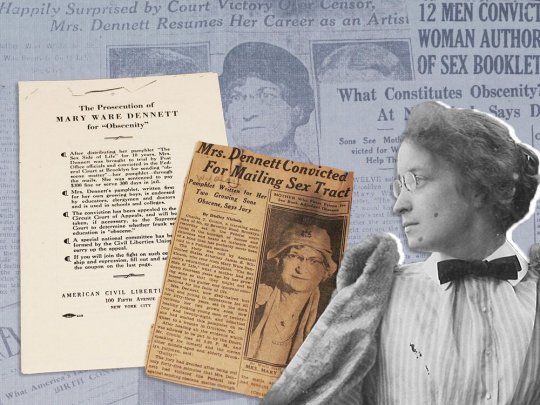
Mary Ware Dennett wrote The Sex Side of Life in 1915 as a teaching tool for her teenage sons.
Photo illustration by Meilan Solly / Photos courtesy of Sharon Spaulding and Newspapers.com
It only took 42 minutes for an all-male jury to convict Mary Ware Dennett. Her crime? Sending a sex education pamphlet through the mail.
Charged with violating the Comstock Act of 1873—one of a series of so-called chastity laws—Dennett, a reproductive rights activist, had written and illustrated the booklet in question for her own teenage sons, as well as for parents around the country looking for a new way to teach their children about sex.
Lawyer Morris Ernst filed an appeal, setting in motion a federal court case that signaled the beginning of the end of the country’s obscenity laws. The pair’s victory marked the zenith of Dennett’s life work, building on her previous efforts to publicize and increase access to contraception and sex education. (Prior to the trial, she was best known as the more conservative rival of Margaret Sanger, founder of Planned Parenthood.) Today, however, United States v. Dennett and its defendant are relatively unknown.
“One of the reasons the Dennett case hasn’t gotten the attention that it deserves is simply because it was an incremental victory, but one that took the crucial first step,” says Laura Weinrib, a constitutional historian and law scholar at Harvard University. “First steps are often overlooked. We tend to look at the culmination and miss the progression that got us there.”

Dennett wrote the offending pamphlet (in blue) for her two sons.
Sharon Spaulding / Dennett Family Archive
Dennett wrote the pamphlet in question, The Sex Side of Life: An Explanation for Young People, in 1915. Illustrated with anatomically correct drawings, it provided factual information, offered a discussion of human physiology and celebrated sex as a natural human act.
“[G]ive them the facts,” noted Dennett in the text, “… but also give them some conception of sex life as a vivifying joy, as a vital art, as a thing to be studied and developed with reverence for its big meaning, with understanding of its far-reaching reactions, psychologically and spiritually.”
After Dennett’s 14-year-old son approved the booklet, she circulated it among friends who, in turn, shared it with others. Eventually, The Sex Side of Life landed on the desk of editor Victor Robinson, who published it in his Medical Review of Reviewsin 1918. Calling the pamphlet “a splendid contribution,” Robinson added, “We know nothing that equals Mrs. Dennett’s brochure.” Dennett, for her part, received so many requests for copies that she had the booklet reprinted and began selling it for a quarter to anyone who wrote to her asking for one.
These transactions flew in the face of the Comstock Laws, federal and local anti-obscenity legislation that equated birth control with pornography and rendered all devices and information for the prevention of conception illegal. Doctors couldn’t discuss contraception with their patients, nor could parents discuss it with their children.

Dennett as a young woman
Sharon Spaulding / Dennett Family Archive
The Sex Side of Life offered no actionable advice regarding birth control. As Dennett acknowledged in the brochure, “At present, unfortunately, it is against the law to give people information as to how to manage their sex relations so that no baby will be created.” But the Comstock Act also stated that any printed material deemed “obscene, lewd or lascivious”—labels that could be applied to the illustrated pamphlet—was “non-mailable.” First-time offenders faced up to five years in prison or a maximum fine of $5,000.
In the same year that Dennett first wrote the brochure, she co-founded the National Birth Control League (NBCL), the first organization of its kind. The group’s goal was to change obscenity laws at a state level and unshackle the subject of sex from Victorian morality and misinformation.
By 1919, Dennett had adopted a new approach to the fight for women’s rights. A former secretary for state and national suffrage associations, she borrowed a page from the suffrage movement, tackling the issue on the federal level rather than state-by-state. She resigned from the NBCL and founded the Voluntary Parenthood League, whose mission was to pass legislation in Congress that would remove the words “preventing conception” from federal statutes, thereby uncoupling birth control from pornography.
Dennett soon found that the topic of sex education and contraception was too controversial for elected officials. Her lobbying efforts proved unsuccessful, so in 1921, she again changed tactics. Though the Comstock Laws prohibited the dissemination of obscene materials through the mail, they granted the postmaster general the power to determine what constituted obscenity. Dennett reasoned that if the Post Office lifted its ban on birth control materials, activists would win a partial victory and be able to offer widespread access to information.
Postmaster General William Hays, who had publicly stated that the Post Office should not function as a censorship organization, emerged as a potential ally. But Hays resigned his post in January 1922 without taking action. (Ironically, Hays later established what became known as the Hays Code, a set of self-imposed restrictions on profanity, sex and morality in the motion picture industry.) Dennett had hoped that the incoming postmaster general, Hubert Work, would fulfill his predecessor’s commitments. Instead, one of Work’s first official actions was to order copies of the Comstock Laws prominently displayed in every post office across America. He then declared The Sex Side of Life “unmailable” and “indecent.”
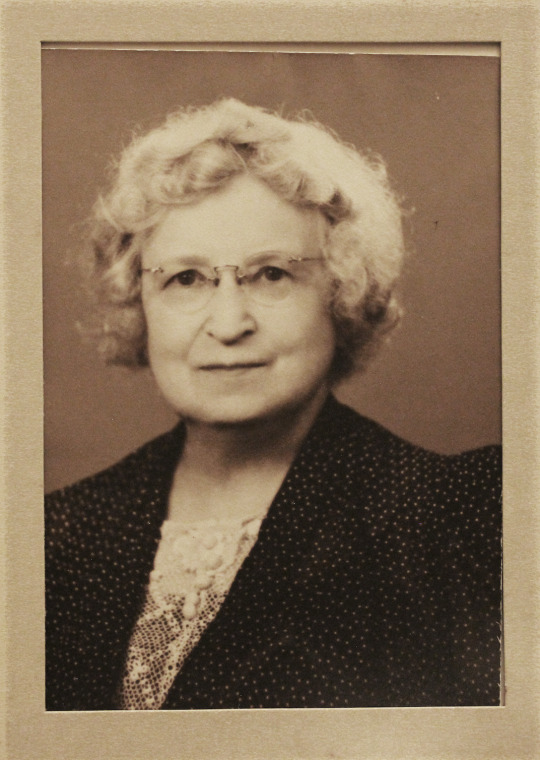
Mary Ware Dennett, pictured in the 1940s
Dennett Family Archive
Undaunted, Dennett redoubled her lobbying efforts in Congress and began pushing to have the postal ban on her booklet removed. She wrote to Work, pressing him to identify which section was obscene, but no response ever arrived. Dennett also asked Arthur Hays, chief counsel of the American Civil Liberties Union (ACLU), to challenge the ban in court. In letters preserved at Radcliffe College’s Schlesinger Library, Dennett argued that her booklet provided scientific and factual information. Though sympathetic, Hays declined, believing that the ACLU couldn’t win the case.
By 1925, Dennett—discouraged, broke and in poor health—had conceded defeat regarding her legislative efforts and semi-retired. But she couldn’t let the issue go entirely. She continued to mail The Sex Side of Life to those who requested copies and, in 1926, published a book titled Birth Control Laws: Shall We Keep Them, Change Them, or Abolish Them?
Publicly, Dennett’s mission was to make information about birth control legal; privately, however, her motivation was to protect other women from the physical and emotional suffering she had endured.
The activist wed in 1900 and gave birth to three children, two of whom survived, within five years. Although the specifics of her medical condition are unknown, she likely suffered from lacerations of the uterus or fistulas, which are sometimes caused by childbirth and can be life-threatening if one becomes pregnant again.
Without access to contraceptives, Dennett faced a terrible choice: refrain from sexual intercourse or risk death if she conceived. Within two years, her husband had left her for another woman.
Dennett obtained custody of her children, but her abandonment and lack of access to birth control continued to haunt her. Eventually, these experiences led her to conclude that winning the vote was only one step on the path to equality. Women, she believed, deserved more.
In 1928, Dennett again reached out to the ACLU, this time to lawyer Ernst, who agreed to challenge the postal ban on the Sex Side of Life in court. Dennett understood the risks and possible consequences to her reputation and privacy, but she declared herself ready to “take the gamble and be game.” As she knew from press coverage of her separation and divorce, newspaper headlines and stories could be sensational, even salacious. (The story was considered scandalous because Dennett’s husband wanted to leave her to form a commune with another family.)
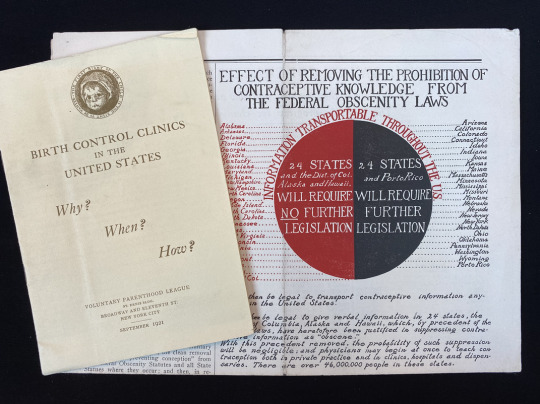
Dennett cofounded the National Birth Control League, the first organization of its kind in the U.S., in 1915. Three years later, she launched the Voluntary Parenthood League, which lobbied Congress to change federal obscenity laws.
Sharon Spaulding / Dennett Family Archive
“Dennett believed that anyone who needed contraception should get it without undue burden or expense, without moralizing or gatekeeping by the medical establishment,” says Stephanie Gorton, author of Citizen Reporters: S.S. McClure, Ida Tarbell and the Magazine That Rewrote America. “Though she wasn’t fond of publicity, she was willing to endure a federal obscenity trial so the next generation could have accurate sex education—and learn the facts of life without connecting them with shame or disgust.”
In January 1929, before Ernst had finalized his legal strategy, Dennett was indicted by the government. Almost overnight, the trial became national news, buoyed by The Sex Side of Life’s earlier endorsement by medical organizations, parents’ groups, colleges and churches. The case accomplished a significant piece of what Dennett had worked 15 years to achieve: Sex, censorship and reproductive rights were being debated across America.
During the trial, assistant U.S. attorney James E. Wilkinson called the Sex Side of Life “pure and simple smut.” Pointing at Dennett, he warned that she would “lead our children not only into the gutter, but below the gutter and into the sewer.”
None of Dennett’s expert witnesses were allowed to testify. The all-male jury took just 45 minutes to convict. Ernst filed an appeal.
In May, following Dennett’s conviction but prior to the appellate court’s ruling, an investigative reporter for the New York Telegram uncovered the source of the indictment. A postal inspector named C.E. Dunbar had been “ordered” to investigate a complaint about the pamphlet filed by an official with the Daughters of the American Revolution (DAR). Using the pseudonym Mrs. Carl Miles, Dunbar sent a decoy letter to Dennett requesting a copy of the pamphlet. Unsuspecting, Dennett mailed the copy, thereby setting in motion her indictment, arrest and trial. (Writing about the trial later, Dennett noted that the DAR official who allegedly made the complaint was never called as a witness or identified. The activist speculated, “Is she, perhaps, as mythical as Mrs. Miles?”)
Dennett’s is a name that deserves to be known.
When news of the undercover operation broke, Dennett wrote to her family that “support for the case is rolling up till it looks like a mountain range.” Leaders from the academic, religious, social and political sectors formed a national committee to raise money and awareness in support of Dennett; her name became synonymous with free speech and sex education.
In March 1930, an appellate court reversed Dennett’s conviction, setting a landmark precedent. It wasn’t the full victory Dennett had devoted much of her life to achieving, but it cracked the legal armor of censorship.
“Even though Mary Ware Dennett wasn’t a lawyer, she became an expert in obscenity law,” says constitutional historian Weinrib. “U.S. v. Dennett was influential in that it generated both public enthusiasm and money for the anti-censorship movement. It also had a tangible effect on the ACLU’s organizational policies, and it led the ACLU to enter the fight against all forms of what we call morality-based censorship.”
Ernst was back in court the following year. Citing U.S. v. Dennett, he won two lawsuits on behalf of British sex educator Marie Stopes and her previously banned books, Married Love and Contraception. Then, in 1933, Ernst expanded on arguments made in the Dennett case to encompass literature and the arts. He challenged the government’s ban on James Joyce’s Ulysses and won, in part because of the precedent set by Dennett’s case. Other important legal victories followed, each successively loosening the legal definition of obscenity. But it was only in 1970 that the Comstock Laws were fully struck down.
Ninety-two years after Dennett’s arrest, titles dealing with sex continue to top the list of the American Library Association’s most frequently challenged books. Sex education hasn’t fared much better. As of September 2021, only 18 states require sex education to be medically accurate, and only 30 states mandate sex education at all. The U.S. has one of the highestteen pregnancy rates of all developed nations.
What might Dennett think or do if she were alive today? Lauren MacIvor Thompson, a historian of early 20th-century women’s rights and public health at Kennesaw State University, takes the long view:
While it’s disheartening that we are fighting the same battles over sex and sex education today, I think that if Dennett were still alive, she’d be fighting with school boards to include medically and scientifically accurate, inclusive, and appropriate information in schools. … She’d [also] be fighting to ensure fair contraceptive and abortion access, knowing that the three pillars of education, access and necessary medical care all go hand in hand.
At the time of Dennett’s death in 1947, The Sex Side of Life had been translated into 15 languages and printed in 23 editions. Until 1964, the activist’s family continued to mail the pamphlet to anyone who requested a copy.
“As a lodestar in the history of marginalized Americans claiming bodily autonomy and exercising their right to free speech in a cultural moment hostile to both principles,” says Gorton, “Dennett’s is a name that deserves to be known.”
Activism
Censorship
Law
Sex
Sexuality
Women’s History
Women’s Rights
Women’s Suffrage
#History
7 notes
·
View notes
Photo

Margaret Morris was a British dancer and choreographer born in 1892. She was the first advocate of the Isadora Duncan technique in Britain. He founded the Margaret Morris Movement, Celtic Ballet, and two Scottish National Ballets in Glasgow and in Pitlochry.
21 notes
·
View notes
Text
Black People’s Contributions To The UK: A Very Small Sample
Women
Phillis Wheatley
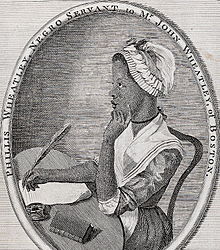
From West Africa.Sold as a slave to a family called the Wheatleys. Named after the family to whom she was sold and the vessel that transported her to America–‘the Phillis’.Wrote her first poem at 14 years old.First volume of poetry published in 1773.Moved to England at 20. Contributed to the anti-slavery movement. Read: Poems by Phillis Wheatley
Mary Seacole
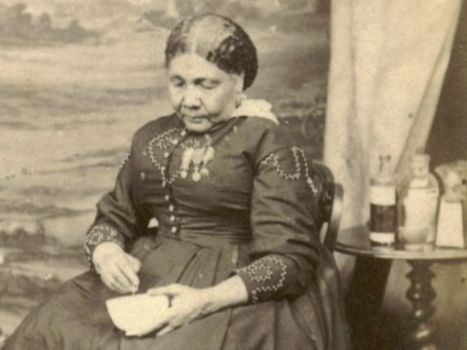
From Jamaica.Traveled to England in 1854 with the intention of an onward journey to Balaclava, Ukraineto assist the soldiers fighting in the Crimean War (1853-1856). War Office denied her request. Made her own way and established a boarding houseto successfullylook after the wounded British soldiers using traditional medicines.She then traveled relentlessly.Returned to England and is now buried at Saint Mary’s Catholic Cemetery, London.
Fanny Eaton

From Jamaica. A model for the Pre-Raphaelite Brotherhood and their circle between 1859–1867.Public debut was in Simeon Solomon's painting ‘The Mother of Moses’, which was exhibited at the Royal Academy in 1860.
The Mother of Moses - Simeon Solomon (1840-1905)
1860 Oil on canvas

Lilian Bader
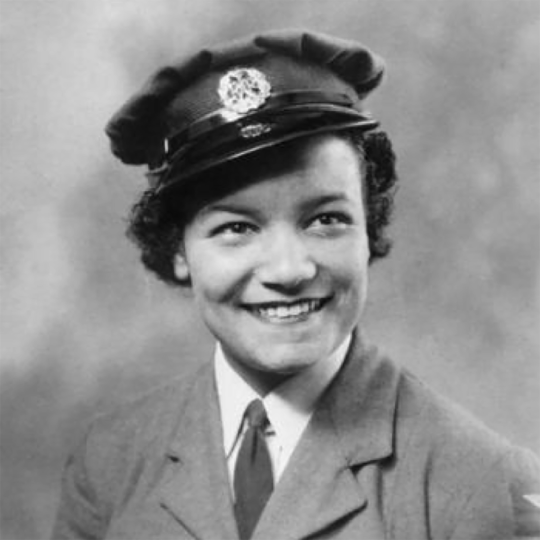
From Liverpool.The first black woman to join the British Armed Forces where she was: Canteen Assistant, Instrument repairer, Leading aircraft woman, and a Corporal. On receiving her degree from the University of London, she became a teacher.
olive Morris

From Jamaica.A member of the Black Panther Movement.Campaigned for rights of black people in Manchester and South London.Whilst at university expanded her activism to an international stage, visiting China and publishing an article from that visit. Founding member of Organisation of Women of African and Asian Descent (OWAAD) and,the Brixton Black Women's Group.
Margaret Busby
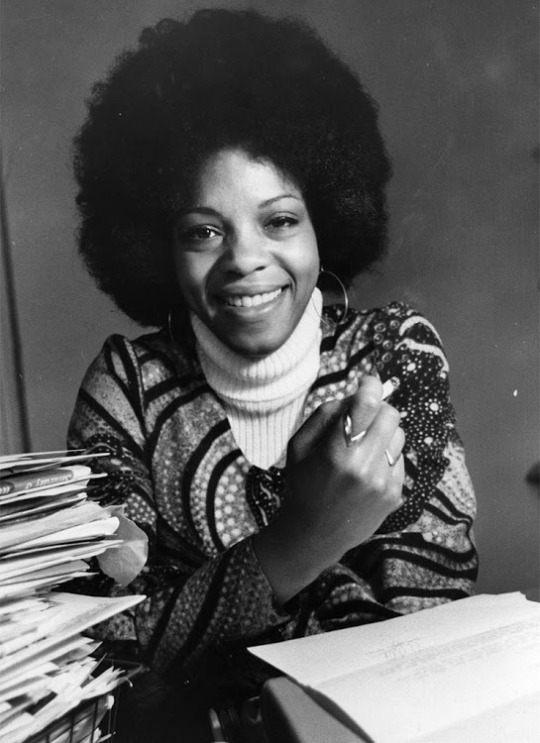
From Ghana. Youngest and first black female book publisher.Founded the publishing company Allison& Busby in 1967, alongside Clive Allison.A campaigner for diversity in publishing –co-founded Greater Access to Publishing (GAP).
Malorie Blackman

From London of Barbadian parents.Qualified as a computer scientist. Writer of children and young adult novels.Author of the Noughts&Crosses series.Eight Children’s Laureate–first black person in that role.Awarded an OBE in 2008.
Dr. Shirley Thompson
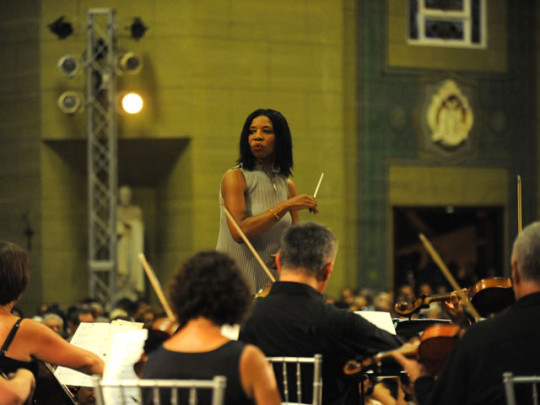
From London of Jamaican parents.Professor of Music at the University of Westminster.Recently named "one of the most inspirational Black British women" by the newspaper Metro.The first woman in Europe to conduct and compose a symphony within the last 40 years,composed to mark the Queen's Golden Jubilee in 2002, -New Nation Rising.A 21st Century Symphony.Named on the Evening Standard's Power List of Britain's Top 100 Most Influential Black People in 2010, 2011, 2012, 2013, 2014, 2015 and 2016.

From Jamaica. Barbara Blake-Hannah was the first ever black person to appear in a news role on British television in 1968. She paved the way for Moira Stuart, Trevor McDonald, and others.She was an on-camera reporter and interviewer on Thames Television’s Today programme. Since returning to Jamaica she has had a career in film making and written five books, including one in 1982 about the Rastafarian religion, which is her faith.
Dr. Youmna Mouhammed

From Mayotte, a small island off the coast of Southeast Africa. Dr Mouhamad has a PhD in polymer physics and is currently a Technology Transfer Fellow at SPECIFIC in Swansea University and is working on industrial coatings.She is pushing to improve the representation of black women within STEM, the disciplines of science, technology, engineering, and mathematics.She is the leader of the Black, Asian and Minority Ethnic (BAME) students in Engineering Network, formed in 2019. This network aims to progress racial equality by raising awareness of the challenges that BAME students and staff experience, then suggest interventions or strategies that investigate how to overcome the challenges.
Men
Ignatius Sancho
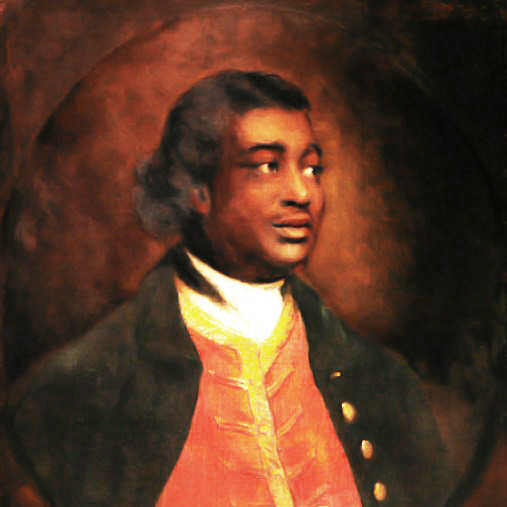
Born on a slave ship. Ignatius Sancho was an influential figure in the arts and is the first known black British voter. He is known for his plays, poetry,and music, and had a shop in London, where other creative people like him would meet up. He spoke out against the slave trade. Read: Letters of the Late Ignatius Sancho: An African
Oluada Equiano

From Southern Nigeria. He was a slave but managed to buy his freedom and moved to London.Became very involved in the abolition movement. His book about slavery is one of the earliest accounts about what it was like to be a slave and it is one of the best-selling books on the topic. His autobiography (1789) ‘The Interesting Narrative of the Life of Olaudah Equiano or Gustavus Vassa, the African’ was a seminal piece to those working to abolish slavery and its sales made him a wealthy man.
George Bridgetower
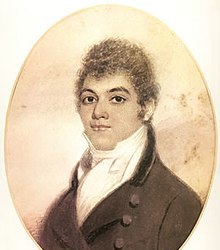
From Biala Podlaska, Poland-Lived in England for much of his life. Virtuoso Violinist Year of birth vary between 1778, 1779 or 1780.The son of an African father and a Polish mother. Said to be the older of two brothers, with his younger brother being a cellist. George was a student of composer Joseph Haydn and (once) a friend of Beethoven. Whilst friends, Beethoven dedicated a violin sonata to him, which was so hard to play many gave up.
Ira Aldridge
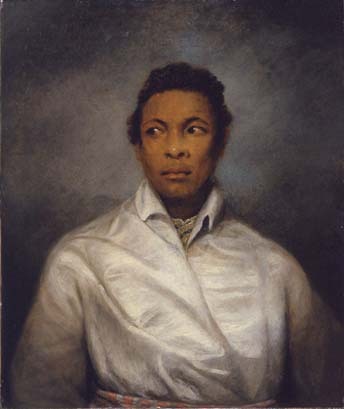
From New York – moved to the UK. Believed he stood a better chance of accomplishing his ambitions to become a brilliant and recognised actor.He became an important actor in plays at the theatre and was one of the highest paid actors in the world.He also became well known across Europe as a brilliant Shakespearean actor. Aldridge first toured to continental Europe in 1852, with successes in Germany, where he was presented to the Duchess of Saxe-Coburg-Gotha, and performed for Frederick William IV of Prussia; he also performed in Budapest. An 1858 tour took him to Serbia and to Imperial Russia, where he became acquainted with Count Fyodor Tolstoy, Mikhail Shchepkin and the Ukrainian poet and artist Taras Shevchenko, who did his portrait in pastel.
John Edmonstone
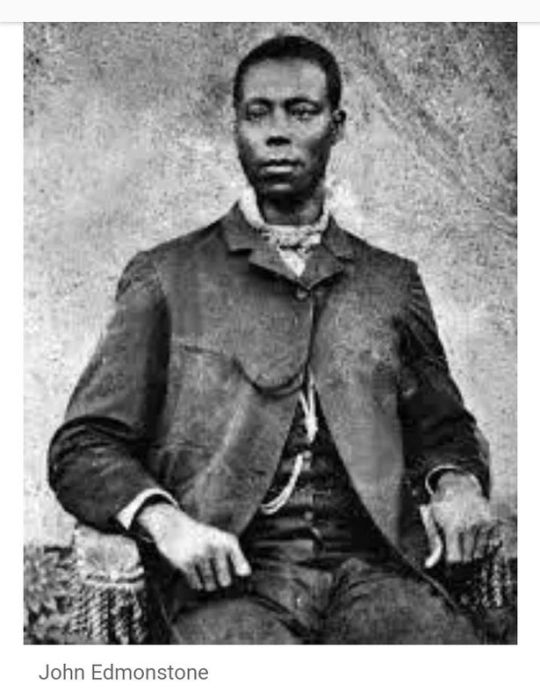
From British Guiana. He was born into slavery but gained his freedom. Becoming skilled in taxidermy John Edmonstone was a very important figure in the world of scientific research.He taught at Edinburgh University in the 19th century with Charles Darwin as one of his students. It is said that Darwin’s theories on how humans have developed throughout time resulted from the teaching of John Edmonstone.
Samuel Coleridge Taylor
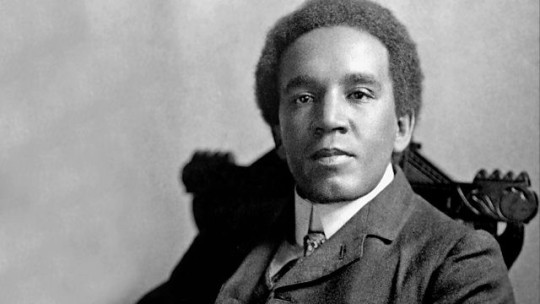
From London. Studied at the Royal College of Music in London.He partnered with several talented musicians, worked across continents and wrote many beautiful pieces of music enjoyed all over the world and still being enjoyed today. He died at the age of 37 from pneumonia. Compositions included: The Song of Hiawatha, Hiawatha Overture, Violin Concerto in G Minor. Read:The complete poems of Samuel Coleridge Taylor
Sir Learie Constantine

From Trinidad.A member of West Indian Cricket team who settled in Lancashire. Became England’s first black peer due to his political work which included relentlessly fighting for racial equality. Described as a cricketer, statesman and advocate of racial equality. Read: Colour Bar (1954) and, Learie Constantine and Race Relations in Britain and the Empire By Jeffrey Hill (Author)
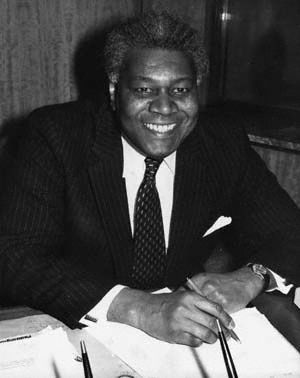
From Grenada.The second peer of African descent to sit in the House of Lords, He was the longest serving Black Parliamentarian. He was described as a revolutionary politician. He was a medical practitioner in Trinidad on completion of his studies (Edinburgh University). His involvement in politics was twinned with his medical practice. He was a funding member and leader of the West Indian National Party. He returned to the UK and lived in London. As a member of the House of Lords, he played a leading role in campaigning for the Race Relations Act 1976. He was outspoken on issues such as immigration policy, and in a debate on 24 June 1976 he noted, in part: "...it is a myth, that the fewer the numbers [of black immigrants] the better the quality of race relations. That is a myth, and it is a myth that has inspired the 1962 Commonwealth Immigrants Act, the Immigration White Paper of August 1965 and the Immigration Acts of 1968 and 1971. It is designed to placate the racialists, but it is a fallacy; for to the racialist or the anti-semite the only acceptable number is nought....(Immigration Policy debate, Hansard, vol. 372, 24 June 1976.)
Stuart Hall

From Jamaica. One of the Windrush generation and an Oxford graduate he was responsible for pioneering theories of multiculturalism and the first cultural studies course in Britain, which was offered by the University of Birmingham. The Observer referred to him as “one of the country's leading cultural theorists". His ideas and books, which included The Hard Road to Renewal: Thatcherism and the Crisis of the Left (1988), Formations of Modernity (1992), Questions of Cultural Identity (1996), and Cultural Representations and Signifying Practices (1997), inspired a whole new generation of multicultural academics and advocates.
Paul Stephenson

From Essex. Paul was Bristol’s first black social worker. As an equal rights campaigner he worked for the Commission for Racial Equality and the Press Council to ensure minorities were both working in newspapers and being covered fairly by them.He spent his life leading campaigns to change the way black people were being treated and it is said that his work played a part in Britain’s first Race Relations Act in 1965.
10 notes
·
View notes
Text
Chapter 11 & 12
I had to take a little break from posting because I suffered a loss in the family (a really close family member).
Reading chapter 11, I began to see how the different forms of Art Nouveau. The period of the Art Nouveau movement flourished between 1890 and 1910. The different forms of Art Nouveau and the reasons they differ depends on the country. In the Asian countries the ukiyo-e became a prominent form of Art Nouveau. Art Nouveau made it to Paris; Jules Cheret and Eugene Grasset are listed as importation in this transition. The Art Nouveau movement made it to England primarily with the use of graphic design and illustration. Art Nouveau also made it to America by way of British and French graphic art. There were two forms of Art Nouveau that existed in the Netherlands called Nieuwe Kunst and Batikt. Nieuwe Kunst spanned from 1892 to 1906 and is described as more playful and diverse. Germany also had a form of Art Nouveau called Jugendstil.
Chapter 12 details the design in the turn of the century. In this chapter, readers are introduced to the Vienna Secession style of design. This style is the style that bridged the 19th century with the 20th century. Areas of change in the 20th century include designs for architecture, graphic, & typography. The text show that the worlds first underground electric rail system opened in London. This railway system was instrumental in visual design by being an area of free publicity to people that used the public transportation system.
**Notes**
It appears as though women was inspiration to many artist that contributed to the Art Nouveau. Western societies became engulfed with all things Japanese. The term for this mania is Japonsime. The spread of Art Nouveau became possible through advances in transportation and communication.
**People & Entities**
Hishikawa Moronobu: is the first master of the ukiyo-e print.
Kitagawa Utamaro: is called the supreme poet of Japanese Print. He specialized in the portraying nature and human expression such as insects, bird, flowers, and women of great beauty. He went to jail for his pettiness because he depicted military ruler Toyotomi Hideyoshi wife and concubines. hahhahaha so far he’s my fave of chapter 9.
Jules Cheret: Jules has many accomplishments. The reason for his mention here is because I think it is amazing that he completed his work directly on lithographic stones. He was also a man in support of feminism. He did this with his work by showing a new role for women. According to the text, these women are self assured, happy, wearing low cut dresses, dancing, drinking wine, and publicly smoking. He was named the Father of Women Liberation.
Eugene Grasset: Was inspired by medieval art and Asian art. He developed what is called the coloring book style of art. Grasset is also very important in spread of Art Nouveau in America.
Aubrey Beardsley: Contribution includes work using a vibrant black and white art. This black and white art was coined “The Black Spot”. He continued his work despite being hated on by William Morris. He later was named Art Editor for the Yellow Book magazine.
Alphonse Mucha :is a very important person in the wide spread of Art Nouveau. He created art with women as the focus surrounded by stylized forms of plants and flowers. The women that is portrayed in Mucha’s work are what I call every kind of woman (basically a woman figure without specifics except European.)
Van de Velde: was an architect, painter, designer, and educator. His talents and accomplishments collectively established prominence to be mentioned in the text. Van de Velde used the human imagination to drive the points of his work. This is because he used abstract expression in his work. Instead of telling about the product or showing someone using the product, he would use abstract expressions to deliver messages to viewers. There is a quote from the text that stood out to me from Van de Velde that influenced the development of 20th century architecture and design theory: “He taught that all branches of art-from painting to graphic design, from industrial design to sculpture--share a common language of form and are of equal importance to the human community.”
Glasgow school: consisted of a group of four designers: J Herbert McNair, Charles Rennie Mackintosh, and Margaret and Frances Mcdonald. The group collaborated on a number of designs , one of my favorites is the poster for Glasgow school. Though the four are all designers, they all have specialty areas in design such as Mackintosh specializing in the design of objects, chairs, and interiors.
The Kunstlerhaus, the Viennese Creative Artist Association: The group consisted of Painter Gustav Klimt, architects Joseph Maria Olbrich and Josef Hoffman, and artist-designer Koloman Moser.
Ver Sacrum: is a magazine that displayed many designs by various artist. This is the magazine that businesses, writers, and artist alike wanted to be in.
Peter Behrens: was an artist, architect, and designer that sought typographic reform. He is also known as “the first industrial designer”. According to the text Behren believed that after architecture, typography provided “the most characteristic picture of a period, and the strongest testimonial of the spiritual progress and development of a people. (this last quote sums up the evolution of the alphabet and writing. I including this from the text because it sums up the first few chapters in a quote). Some of the designs Behren was responsible for designing include teakettles, fans, street-lamps, and industrial products.
Edward Johnston: is a calligrapher and teacher that designed a version of the Railway system in London that was established in 1890. His version of the stations signage and logo are still in use today.
Designs:
Salon Des Cent: I love the contrasting colors. The warm colors on the woman pop out more against the cool colors in the background. I also love the use of thick bold lines.
Tournee du Chat Noir dr Rodolphe Salis: I love this design. The use of warm colors allows this poster to stand out. The cat covers most of the left side of the poster extending from the top and the bottom of the poster.
General Electric trademark: I had to include this design mostly because of familiarity and the fact that I now understand why it was designed the way it is. I now know the styling of the design.
Poster for the Glasgow Institute of the Fine Arts: the design of this poster is beautiful. It gives a sense of direction by allowing white space to exist surrounding the figure. The figure is in a red color which grabs the viewer attention and the image is balanced. I think I love it because it seems as though the figure is becoming or is in touch with his/her higher self.
Poster for the thirteenth Vienna Secession exhibition: this poster is clearly inspired by the Poster for the Glasgow Institute of the Fine Arts. I love the use of the cool colors as accent colors in the warm colors and the fact that there are three figures. It creates a triangular illusion with the use of the three figures in the middle of the circle.
Poster for Fledermaus: This design was created by Berthold Loffler. Loffler did a great job with this. The use of colors pop on a black background, the warm colors red and yellow are attention grabbers, and the white mask is contrasting with the black background for its attention grabbing power.
Muthesius: believed in simplicity and exactness with the use of machinery. He wanted to elimiate all ornaments. I mentioned him because I wholeheartedly agree even though I also agree with Van de Veldes vision of expression.
AEG Electric Lamp Poster: The geometric elements in this poster makes this design stunning. The light bulbs is centered at the top of the triangle and appears to be emitting light in the form of small circles that are contained by the triangle as if it is a lamp shade. The light is flowing in the direction towards the text of the poster, driving the viewers attention to the name of the product. Brilliant!
**Religion** (You know I have to include that religion portion because the book tells it in the nicest way.)
Quoting from the text: Fearful of the potential impact of European colonial expansion and Christian Missionaries (take overs; Massacres) on Japanese culture, the shogun issued three decrees in the 1630′s excluding foreigners and adopted an official policy of national seclusion.
The above fears of the Asian people came to fruition. The text speaks of the Asian artifacts that were taken and place as trophies in museums.
2 notes
·
View notes
Text

Songsheet of 'The March of the Women', 1911. Artist: Margaret Morris. "The March of the Women" is a song composed by Ethel Smyth in 1910, to words by Cicely Hamilton. It became the official anthem of the Women's Social and Political Union and more widely the anthem of the women's suffrage movement throughout the United Kingdom and elsewhere.
61 notes
·
View notes
Text
YA Pride Dream Books Pt. 3
Part 1 Part 2
I saw that YA Pride asked their twitter followers to respond with their dream LGBT books here and while yes, we need absolutely need more books and more diverse books, I don’t want people to miss out on some of the great books that already exist! (Going off a mix of books I’ve read and descriptions, anything marked by a * I haven’t personally read)

LGBT History:
Sappho Was A Right-On Woman: A Liberated View of Lesbianism by Sidney Abbott and Barbara Love
Dispatches from Lesbian America edited by Xequina Maria Berber, Giovanna Capone, and Cheela Romain Smith
Eating Fire: My Life as a Lesbian Avenger by Kelly Cogswell
Gay L.A.: A History of Sexual Outlaws, Power Politics, and Lipstick Lesbians by Lillian Faderman and Stuart Timmons
The Gay Revolution: The Story of the Struggle by Lillian Faderman*
Odd Girls and Twilight Lovers: A History of Lesbian Life in the Twentieth Century by Lillian Faderman
To Believe in Women: What Lesbians Have Done for America - A History by Lillian Faderman
Aimée & Jaguar: A Love Story, Berlin 1943 by Erica Fischer
Perfect Enemies: The Battle Between the Religious Right and the Gay Movement by John Gallagher and Chris Bull
Victory: The Triumphant Gay Revolution by Linda Hirsham
Violence Against Queer People: Race, Class, Gender, and the Persistence of Anti-LGBT Discrimination by Doug Meyer*
Queer (In)Justice: The Criminalization of LGBT People in the United States by Joey L. Mogul, Andrea J. Ritchie, and Kay Whitlock
The Disappearing L: Erasure of Lesbian Spaces and Culture by Bonnie J. Morris
The Pink Triangle: The Nazi War Against the Homosexuals by Richard Plant
Sapphistries: A Global History of Love Between Women by Leila J. Rupp
And the Band Played On: Politics, People, and the AIDS Epidemic by Randy Shilts
Tell: Love, Defiance, and the Military Trial at the Tipping Point for Gay Rights by Major Margaret Witt with Tim Connor
Here’s a whole Goodreads list full
Here’s another one

Questioning:
Am I Blue: Coming Out from the Silence edited by Marion Dane Bauer
Drum Roll, Please by Lisa Jenn Bigelow
Ivy Aberdeen’s Letter to the World by Ashley Herring Blake
Little & Lion by Brandy Colbert
Star-Crossed by Barbara Dee
Ask the Passengers by A.S. King
Ship It by Britta Lundin
37 Things I Love (In No Particular Order) by Kekla Magoon
Kissing Kate by Lauren Myracle
When Katie Met Cassidy by Camille Perri
P.S. I Miss You by Jen Petro-Roy
She Is Me by Cathleen Schine
Dress Codes for Small Towns by Courtney Stevens
Girl Hearts Girl by Lucy Sutcliffe
Our Own Private Universe by Robin Talley
What We Left Behind by Robin Talley

Gay Brujería:
Labyrinth Lost by Zoraida Córdova
“Healing Rosa” by Tehlor Kay Mejia from All Out: The No-Longer-Secret Stories of Queer Teens Throughout the Ages
“Starsong” by Tehlor Kay Mejia from Toil & Trouble: 15 Tales of Women and Witchcraft

Cheesy Lesbians:
Georgia Peaches and Other Forbidden Fruit by Robin Jaye Brown
Tessa Masterson Will Go to Prom by Emily Franklin and Brendan Halpin
Girls Mans Up by M-E Girard
Everything Leads to You by Nina LaCour
You Know Me Well by Nina LaCour and David Levithan
Summer of Salt by Katrina Leno
Dating Sarah Cooper by Siera Maley
The Summer of Jordi Perez (And the Best Burger in Los Angeles) by Amy Spalding
Girl Falls in Love with the Princess:
Girls Made of Snow and Glass by Melissa Bashardoust
Of Fire and Stars by Audrey Coulthurst
Otherbound by Corinne Duyvis
That Inevitable Victorian Thing by E.K. Johnston
Sword of the Guardian by Merry Shannon*
The Princess Deception by Nell Stark
98 notes
·
View notes
Text
What was the name of the wife of British artist Edward Burne-Jones, who became an artist in her own right?

Georgiana Burne-Jones née Macdonald (1840-1920) got engaged to Edward Burne-Jones at the tender age of fifteen. As well as being a model for her husband, Georgiana became an artist, studying briefly at the Government School of Design in South Kensington before having lessons from Ford Madox Brown. Her artwork mainly consisted of small illustrations and woodcuts and she was never as successful as her husband.
Georgiana put her art to one side after the birth of her son Philip in 1861. Her daughter Margaret was born in 1866, which coincided with her husband’s affair with one of his models. Nonetheless, Georgiana focused on being a good mother and continued to help run the home and studio until her husband repented and returned to her.
As well as being focused on her home life, Georgiana assisted the local community by supporting the South London Art Gallery, voicing her opposition to the Boer war and working as a parish councillor in Sussex. She also made major contributions to the Pre-Raphaelite movement, writing a biography of her husband and helping her son-in-law put together the 'Life of William Morris'.
0 notes